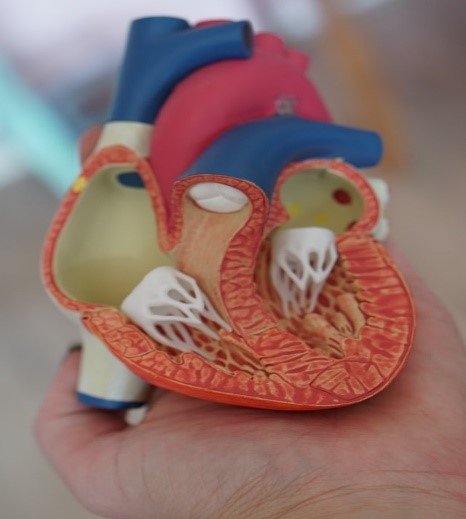The Dangers of PAD in Your 20s
Peripheral arterial disease, also known as a stroke, can happen to anyone, but is most common in people in their 20s. A recent study published by the American Heart Association found that one in five Americans are affected by this condition.
While many people believe that the risk of developing Parkinson’s Disease is low, it is actually quite high. It’s best to take preventative measures and work on healthy lifestyle choices now so you can avoid developing the disease later on.
PAD is a chronic disease that has been hard to treat and is associated with risk factors such as obesity or diabetes. It typically occurs when a person’s blood vessels in the legs and lower body are narrowed due to things like excess weight or high glucose levels. It is not commonly known what the long-term risks are to someone with a disability, but there are some instances where people with disabilities can develop serious complications such as kidney failure, lung infections, and progressive disability at a faster rate if left untreated.

Tips for Maintaining Optimal Levels of Health while Managing the Symptoms of PAD
Peripheral artery disease is a condition that is usually caused by blockages in the arteries in the extremities, which leads to reduced blood flow and a build-up of lactic acid. Signs and symptoms of this disease are often related to light-headedness, muscular weakness, or numbness.
Symptoms of poor blood circulation may include pain in the legs, toes, or fingers that can come suddenly and sometimes be severe. These symptoms can be caused by a number of factors such as clogged arteries or veins, heart disease, lifestyle factors like smoking and lack of exercise, or injuries.
Intermittent claudication is the most common type of peripheral arterial disease and is often brought on by an increase in plaque build-up, which leads to pain in the thighs while walking uphill or standing for long periods of time. This can potentially lead to the formation of a plaque that makes it harder for blood vessels to carry oxygen-rich blood to your muscles.
People who suffer fractures of the upper end of the femur usually receive treatment with medications that reduce inflammation, prevent plaque build-up, and increase nitric oxide levels in the body.
There are a lot of lifestyle changes you can make to help manage symptoms of PAD, from stopping smoking or drinking alcohol to losing weight. Here are some tips for staying healthy while managing peripheral arterial disease symptoms.
Lifestyle changes for managing peripheral arterial disease symptoms:
– Exercising regularly
PAD is a disease that causes the blood vessels in your legs to narrow, restricting the flow of blood. This disease can be managed through exercise. It is important to exercise regularly since it helps improve quality of life and reduces the risk of heart disease and stroke.

Exercising regularly for managing peripheral arterial disease has a number of benefits such as reduced risk of heart attack, improved quality of life, reduced pain levels, increased energy levels, and reduced risk for other diseases.
Some say that one should exercise every day while others say that one should exercise only 2-3 times per week. The choice depends on what type of exercise you do as well as how much physical activity you have been doing in the past.
– Moderate alcohol consumption
Moderate alcohol consumption is considered the best way for managing peripheral arterial disease, but can also lead to complications.
According to a study published in the journal Atherosclerosis, moderate consumption of alcohol by adults lowered the risk of peripheral artery disease, which is common among people with diabetes. This study showed that those who drank moderately and were not diabetic reduced their risk for peripheral artery disease by 54%. Those who drank moderately and were diabetic reduced their risk for this condition by 36%.
Moderate drinking also helps lower blood pressure levels. In fact, a person’s blood pressure should be below 140/90 in order to drink regularly without raising health risks.
Although these benefits are found in moderate drinking, it’s important to keep in mind that alcohol can have negative side effects as well.
– Managing stress levels
Managing stress levels is crucial for managing peripheral arterial disease. This includes maintaining a healthy weight, good sleep, and regular exercise.
The role of health professionals in managing stress levels has changed with the advent of digital technologies, as new instruments are being developed that make it easier to measure stress levels and help people manage them.
Stress-related depression is more common among individuals with peripheral arterial disease than those without it. It can also lead to other physical conditions such as high blood pressure or heart problems.

– Eating healthy and limiting calorie intake
Peripheral arterial disease is a type of peripheral artery disease that affects the blood supply to the lower half of the body. In order to maintain healthy weight and prevent or manage obesity, it is advised that people who have this condition should eat healthy and limit their calorie intake.
In order to avoid cardiac complications, patients with PAD should avoid eating foods high in saturated fat and cholesterol. These include red meats, cheese, whole milk products, cream, butter and fried foods.

– Eliminating processed foods from your diet
The health benefits of eliminating processed foods from your diet are plentiful. For instance, your heart rate and blood pressure will decrease, and you’ll be able to better manage diabetes.
Processed foods have been linked to a variety of problems that could lead to heart disease or diabetes, which is why it’s important for people with peripheral arterial disease to cut down on them.
– Avoiding nicotine exposure
Peripheral arterial disease is a condition that affects the arteries in the lower extremities. Nicotine exposure has been linked with peripheral arterial disease through smoking.
Smoking is a known risk factor for peripheral arterial disease due to its effects on blood vessel health. This means that quitters should be careful of nicotine exposure while continuing with their recovery from this condition.
Nicotine replacement therapy, such as nicotine patches or gum, can be used to help those who are trying to quit.
Tips for Practicing Patience and Acceptance During the Ride Through PAD
Peripheral Arterial Disease is a condition that can cause pain, swelling, skin lesions, and other symptoms. It is the most common cardiovascular disease in older people and can be treated with medication that helps lower blood pressure and relaxes arteries.
It is important to make yourself feel mentally prepared before the ride begins. This includes practicing patience, acceptance, and positivity in spite of the pain. Here are some tips for doing so:
-If you find your mind constantly wandering, it may be time to take a break and focus on something else. Focusing on something outside of your body can help keep you grounded and can even be more calming than focusing on yourself. Books, movies, and video games are great options if you need to get away for a while.
-Utilize visualization techniques to help distract you from the pain
-Focus on how many steps you’ve taken out of your house!
Tips to Manage Social Interactions When Affected by PAD
PAD is a progressive disease that leads to the compromised blood vessel health and circulation. It has been stated over and over that one of the main causes for PAD is increased weight or obesity, which leads to a number of other factors. It is important to note that this is not always the case however. This means that as a person with PAD starts experiencing the symptoms, it becomes harder and harder to live a normal life. The symptoms include fatigue, dizziness, shortness of breath, and pain in the joints.
The following are some tips to manage social interactions when affected by peripheral arterial disease:
– Stay in touch with your friends and family on social media. This is an effective way of maintaining an online presence, even when you’re physically limited. It’s also a great way to stay connected with the world around you.
– Take breaks from prolonged periods of standing if you are feeling exhausted from being on your feet too long.
Conclusion: The Challenges of Living with PAD in Your 20s
As we grow older, the risk of heart attack increases with age, and our arteries harden with time.
The physical and emotional consequences of this disease typically go hand in hand with the financial costs, which can often be problematic for those who are diagnosed with this disorder and their families.
While many have continued to adapt to living with this disease and have not let it become too much of a burden, it can still be difficult for those who feel isolated or are unable to make plans for the future.
It is very difficult to find the energy in your life to work out consistently or make new friends when you are always on the go. But sometimes even a little bit of effort can help! For example, you might consider doing a new workout routine or trying making friends with another person who has disabilities.




